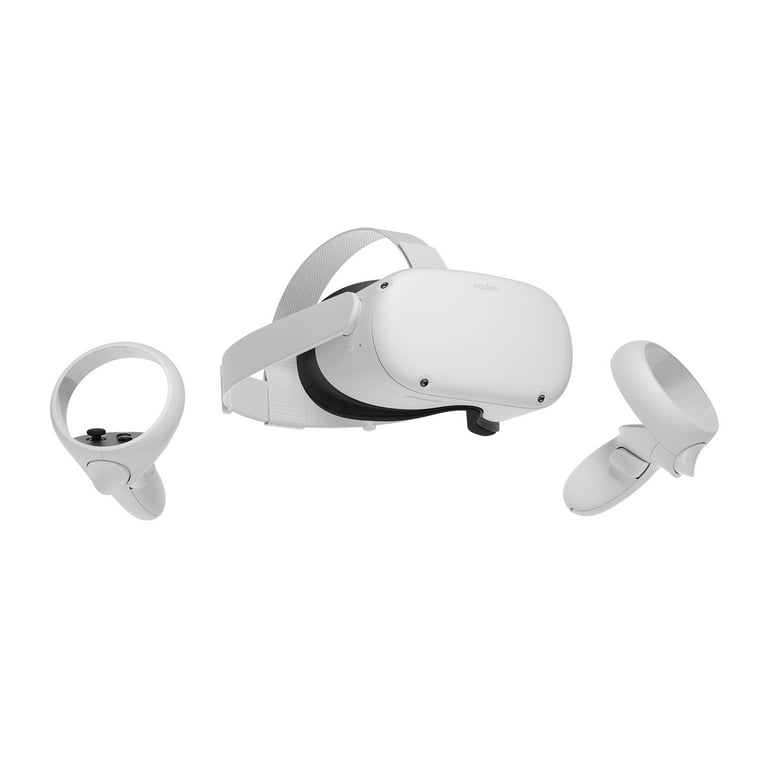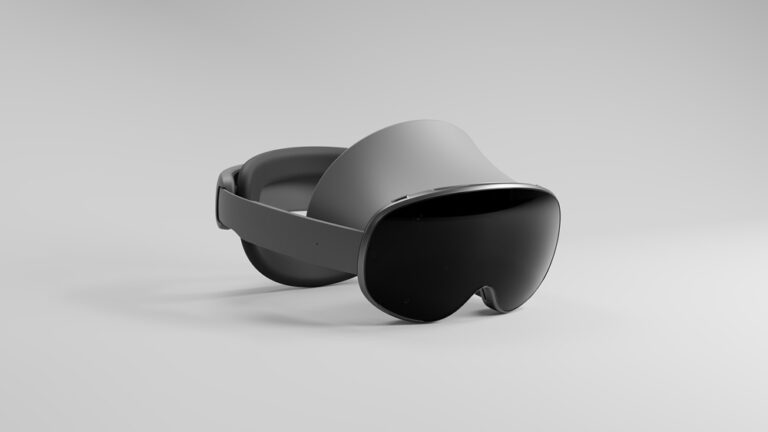
Meta somewhat surprisingly announced an all-new, lower cost VR headset at the Connect 2024 event. CEO Mark Zuckerberg revealed the Quest 3S, a mixed-reality headset priced at $299 and with the goal to make VR more accessible and attract new users. Meta’s goal is to make transformative technology available to everyone and address the decline in traditional VR sales. The market is eager to see how consumers will respond to this new offering and whether it can reignite interest in virtual experiences.
The Quest 3S VR headset is set to disrupt the virtual reality market and the $299 price is somewhat unheard of – especially considering Apple just released their VR headset (Vision Pro) at $3500 earlier this year. This headset is definitely not in the same class as the Vision Pro or anything similar to that. In fact, it makes some compromises in display resolution and lenses when even compared to the pricier Quest 3 (which starts at $499).
With that said, however, it might open up a market that was previously priced out of VR and it still has the core features and performance that make the Quest series appealing. With a focus on affordability and accessibility, the Quest 3S is poised to attract both new and seasoned VR enthusiasts, potentially driving a new wave of adoption and innovation in the VR space.

Meta Quest 3S: A New Era of Affordable VR
Price and Availability
Meta has shaken up the VR landscape with the introduction of the Quest 3S, a budget-friendly mixed reality headset priced at an attractive $299. This makes it significantly more accessible than its predecessor, the Quest 3, and a fraction of the cost of Apple’s Vision Pro. The Quest 3S is available for pre-order and will officially launch on October 15th, 2024, in two storage options: 128GB and 256GB.
Features and Specs
While the Quest 3S shares the same powerful chipset as the Quest 3, it makes some compromises to achieve its lower price point. It boasts a slightly lower resolution display and lenses compared to the Quest 3. However, it retains the essential mixed reality capabilities and fast performance that make the Quest series so popular. The new headset also introduces a dedicated action button for seamless transitions between VR and MR, though it does remove the headphone jack present in previous models.
Target Audience
Meta is clearly positioning the Quest 3S as an entry-level device, targeting users new to the world of VR and mixed reality. It offers a compelling upgrade path for those currently using older Quest models, providing a taste of the latest technology without breaking the bank.
Impact on the Market
The Quest 3S’s aggressive pricing is expected to make a significant impact on the VR market. It challenges the notion that high-quality VR experiences are only accessible at premium prices. This move could potentially accelerate the adoption of VR technology, making it more mainstream and opening doors for new and diverse user experiences.
Table: Meta Quest 3S Specifications
| Specification | Details |
|---|---|
| Price | $299 (128GB), $399 (256GB) |
| Release Date | October 15th, 2024 |
| Display | Lower resolution than Quest 3 |
| Processor | Same chipset as Quest 3 |
| Mixed Reality | Yes |
| Action Button | Yes (new) |
| Headphone Jack | No |
| Storage | 128GB or 256GB |
| Target Audience | New VR users, Quest upgraders |
Short Summary:
- Meta launches Quest 3S priced at $299, featuring advanced mixed-reality capabilities.
- The headset includes significant specifications like a Qualcomm Snapdragon XR Gen 2 chipset and a quality 4K display.
- Pre-orders are open now, with expected shipping commencing on October 15.
In an eagerly awaited announcement, Mark Zuckerberg, the CEO and Founder of Meta, introduced the Quest 3S during the Connect 2024 conference today. This affordable mixed-reality headset is set to broaden access to virtual reality experiences. Offered at a competitive starting price of $299.99 for the 128GB model and $399.99 for the 256GB version, the Quest 3S seeks to appeal to users who have been hesitant due to cost barriers.
The Quest 3S design incorporates key features found in its higher-priced counterpart, the Quest 3, yet makes strategic compromises to keep costs down. The headset includes a Fresnel lens system—albeit at a lower resolution of 1,832 by 1,920 pixels—compared to the Quest 3’s advanced pancake lenses which provide a sharper resolution. Notably, the field of view is slightly reduced to 96 degrees from the Quest 3’s 110 degrees, but key functionalities such as full-color passthrough and high-quality 4K display remain intact.
Equipped with a Qualcomm Snapdragon XR Gen 2 processor and 8GB of RAM, the Quest 3S promises versatile performance suitable for both gaming and productivity applications, including the capability to support remote desktop environments. Zuckerberg emphasized the importance of this feature, stating,
“We’ve been working on bringing the Quest 3 family to a lot more people.”
The device is said to offer the same core capabilities, such as hand-tracking, ensuring that new users can seamlessly engage with mixed-reality applications.

Today’s unveiling also coincided with the launch of Meta for Developers, an initiative aimed at bolstering support for developers focused on XR content. Meta’s refreshed developer centers are designed to facilitate the creation of applications intended for the Quest portfolio. As part of this effort, the company has adopted a more open-minded approach to the distribution and creation of content within its Horizon operating system. The focus will be on building a robust ecosystem of tools and solutions for developers, enhancing their ability to leverage Meta’s considerable social media resources.
As the demand for VR headsets faces challenges, with forecasts predicting a downturn in sales, Meta is strategically positioning the Quest 3S as a preferable alternative. According to a recent IDC report, global shipments for AR/VR headsets dropped by a staggering 67.4% in Q1 2024, predominantly affecting VR sales as consumers shift interest toward mixed reality and augmented reality devices. Research Manager Jitesh Ubrani noted,
“The emergence of new mixed reality/spatial computing devices has contributed to the decline in VR headset sales.”
This shift in consumer focus underscores Meta’s prompt response with the introduction of an accessible mixed-reality headset capable of catering to evolving user preferences.
Despite the dip in sales, analysts predict a hopeful future for the XR market. IDC forecasts a compound annual growth rate (CAGR) of 43.9% for headset shipment volumes from 2024 to 2028, primarily as affordable MR devices become more mainstream. With the Quest 3S entering the market, the company is re-entering the competitive landscape of immersive technology with an eye on future growth.
The high-quality headset is not only limited to gaming; the Quest 3S also supports personal endeavors like wellness training and productivity tools. All the while, users can delight in its “travel mode,” an innovative feature that allows the headset to deliver personalized in-flight entertainment. Meta highlights how the Quest 3S can provide a vast action-packed cinema experience within the confines of an airplane passenger seat.
Pre-orders for the Quest 3S are now live, and the product is set to begin shipping on October 15, 2024. The excitement around this launch is further fueled by the inclusion of an exclusive game—Batman: Arkham Shadow—available for free with the purchase of either the Quest 3S model, or the 512GB variant of the Quest 3, before April 30, 2025.
As Meta continues to innovate in the realm of virtual and mixed reality, the Quest 3S is positioned as a gateway device designed for newcomers eager to explore the possibilities of this technology at an accessible price point. The push for increased affordability reflects Zuckerberg’s commitment—voiced at the conference—to bring immersive experiences to a larger audience. By offering state-of-the-art features at a fraction of the typical cost, Meta is paving the way for a new generation of virtual reality users.
In addition to the Quest 3S, Meta is also reducing the price of the 512GB Quest 3 from $649.99 to $499, adapting to market dynamics and user demands. The company’s strategy emphasizes flexibility and accessibility, ensuring it garners interest across a broad spectrum of potential customers.
Mark Zuckerberg concluded his announcements with a focus on the broader vision for Meta, blending AI capabilities with mixed reality advancements, stating,
“Meta is working to bring the future to everyone.”
His remarks resonate with a commitment to integrate innovative technology into everyday experiences, aiming to revolutionize how consumers interact with their environments—both digitally and physically.





